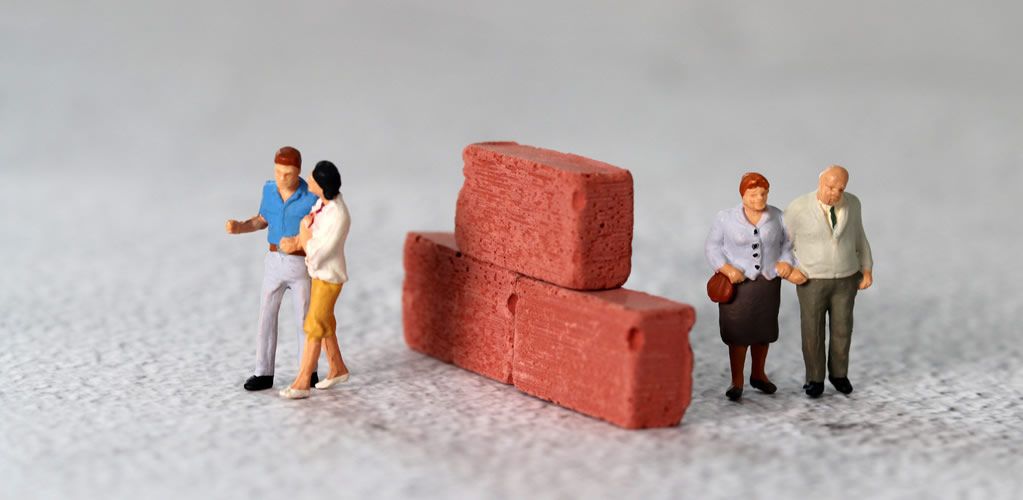Age, not class, is now the biggest divide in British politics
The latest findings from the British Social Attitudes survey suggest younger voters appear to have little faith that public spending will be directed their way.

The latest findings from the British Social Attitudes survey suggest younger voters appear to have little faith that public spending will be directed their way.
“ Class is the basis of British politics; all else is embellishment and detail.” So wrote Peter Pulzer, the former Gladstone professor of politics at the University of Oxford in the 1960s. Nowadays, however, it is age, not social class, that is the biggest demographic division in Britain’s electoral politics.
According to the British Election Study, at the 2019 general election, the Conservatives won the support of 56% of those aged 55 and over, but only 24% of those under 35. Conversely, Labour was backed by 54% of those under-35s who cast a vote, but by just 22% of those aged 55 and over.
In contrast, support for Britain’s two main parties among those in working-class occupations was little different from that among those in professional and managerial jobs.
But what underpins this age divide? We typically think of Labour as a party that is more “left-wing”, more concerned than the Conservatives about inequality and more supportive of “big government”. So does young people’s greater willingness to support Labour mean they are more left-wing than their older counterparts?
Are they more concerned about inequality and more inclined to believe that government should be acting to reduce it? And are they more inclined than older voters to want the government to spend and tax more?
These questions are addressed in a chapter in the latest British Social Attitudes report, published by the National Centre for Social Research. Based on the 40 years of data the annual BSA survey has collected since it began in 1983, the chapter reveals that while younger people have become more concerned about inequality in recent years, this is not accompanied by greater enthusiasm for more tax and spend.
Since 1986, nearly every BSA survey has regularly presented its respondents with a set of propositions designed to measure how “left” or “right-wing” they are on the issue of inequality. People are, for example, asked whether they agree or disagree that “there is one law for the rich and one for the poor”, and “government should redistribute income from the better-off to those who are less well-off”.
Their answers to these and similar statements can be summarised into a scale measure that runs from 0 to 100, where 0 means that someone is very left wing and 100 indicates that they are very right wing.
Young people shift left
When the scale was first administered in 1986, there was no difference between the average score of those aged under 35 and those aged 55 or over. Both had a score of 37.
Equally, 30 years later, in 2016, younger people’s average score of 38 was little different from that of 37 among older people. The growth in Labour’s support among younger people that was already in evidence by then was not underpinned by a more left-wing point of view.
However, a gap has emerged during the last three or four years. In the latest BSA survey, conducted towards the end of 2022, young people scored 28 – ten points below the equivalent figure in 2016. In contrast, at 36, the outlook of older people has barely changed at all.
Yet this does not mean that younger people want more taxation and spending. Every year since 1983 BSA has asked people what the government should do if it has to choose between increased taxation and spending on “health, education and social benefits”, reduced taxation and spending, or keeping things as they are.
In the 1980s, younger people were typically more likely than older people to say that taxation and spending should be increased. In 1984, for example, 42% of those aged under 35 expressed that view, compared with just 33% of those over 55.
But since the mid-90s the opposite has been the case. By 2015, 41% of younger people wanted more taxation and spending compared with 49% of older people.
Meanwhile, the gap has since widened further. Whereas support for increased taxation and spending has risen to 67% among older people – the highest it has been in the last 40 years – among younger people it is still no more than 43%.
Lost faith
So why might have younger people become more concerned about inequality, yet at the same time less supportive of more spending? The answer may well lie in the distinctive economic position in which those in today’s youngest generation find themselves.
The ageing of Britain’s population means that a larger proportion of government spending goes on health and social care from which older people primarily benefit. Meanwhile, while older people are in receipt of relatively generous pensions that have been protected by the triple lock, younger people who have been to university find themselves in effect paying a higher level of “income tax” in order to pay off their student loans.
Meanwhile, although the pandemic posed a greater threat to the health of older people, it was younger people who were more likely to find their educational and economic lives disrupted, and to have found themselves having to endure lockdown in lower-quality accommodation. At the same time, home ownership has become more difficult, not least because so many are spending a significant proportion of their income on rent.
There is, then, good reason why younger people have become more concerned about inequality but seem at the same time to doubt that increased taxation and spending would help them.
The challenge to the parties at the forthcoming election could well be to convince these voters that the next government will offer them a brighter future, rather than add to their woes. But to do that they may well need to be willing to think outside the traditional mindsets associated with the terms “left” and the “right”.







[Read our Comments Guidelines]